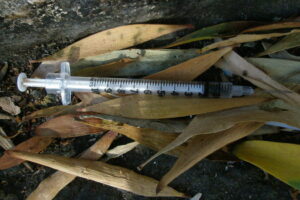In dealing with relapse prevention, substance abuse scientists, researchers and treatment providers have observed that substance-dependent patients often relapse in an attempt to avoid, mitigate, or otherwise deal with negative feelings, unpleasant memories or toxic environments. “Avoidance of unpleasantness” is often a more important motivator in relapse than the “seeking of pleasure” derived from mood-altering drugs or alcohol.
This is especially true in the advanced stages of the disease of substance dependency. What started out as pleasure seeking in early use ends up as pain avoidance or an attempt to achieve “pseudo-normality.” How many times have we heard chronic addicts/alcoholics comment on the fact that they don’t even “enjoy” the effects of drugs/alcohol anymore; rather, the addictive substances are being used to try to get rid of “pain”, “anxiety”, “depression”, “anger”, “sleeplessness”, “loneliness”, “shame”, etc.; in other words, negative feelings, thoughts and emotions.
Early childhood trauma especially has been associated with this kind of chronic drug-relapsing behaviour stemming from “aversion avoidance”. The same can be said for patients raised in socially and economically disadvantaged conditions as well as patients coming from ethnic minorities subject to disadvantages, chronic discrimination and systemic racism; these patients seem to have been “wired” (often from childhood) so that in time, mood-altering chemicals become a perceived necessity in alleviating negative thoughts and feelings, as well as a coping mechanism for a hostile environment.
Actual pleasure-seeking as a motivating factor in using drugs/alcohol seems to become less important (and no longer even achievable) as the disease of substance dependency progresses.
What are the implications for treatment?
Treatment should focus on replacing fleeting and artificial “band-aid” drugs with more permanent interventions across four areas: 1) personal, 2) interpersonal, 3) medical/psychological and 4) social-environmental strategies.
1) Personal interventions (those carried out by the patient him/herself) include meditation training, hobbies (already discussed in a previous blog), exercises, reading… whatever increases the joys of life. It is absolutely crucial that something successful be found in this category in order to cope with “SOLITUDE”: a potentially dangerous but ultimately inevitable state which every addict/alcoholic has to face sooner or later. The aim is to dispel non-chemically the negative mood resulting from years and years of “negative” brain circuitry made worse by the chronic use of drugs/alcohol.
2) Interpersonal modalities aim at eliminating social isolation. Isolation exacerbates the depletion of neurotransmitters in the brains of chronic addicts, perhaps especially so in subacute withdrawal (that period immediately following acute drug or alcohol withdrawal). Examples of interpersonal modalities are: 12-Step meetings, finding a sponsor, “safe” friendships, joining people with common interests – all these maneuvers decrease isolation, stimulate the beneficial rewiring of the brain (which, given a chance, is remarkably amenable to repair) and counteract the neurotoxic feelings of pain, despair and loneliness.
3) Regarding medical/psychological interventions, the importance of an encouraging, positive, supportive addiction counsellor cannot be overstated. At the end of each therapy session, the patient needs to have a sense of hope. The addict’s neurocircuitry is literally being rewired in a positive psychotherapeutic environment.
4) Perhaps most challenging of all: society’s attitudes to addiction and its proper use of health-care dollars to implement TIMELY inpatient and outpatient addiction treatment modalities is of vital importance. Combating childhood hunger, poverty, inequality of access to health care and education (which are ongoing problems in Canada as well as the U.S.) could improve (at the risk of sounding somewhat mechanistic) early-onset neurocircuitry disruptions and thereby prevent many later disorders and social problems, including substance dependency.
Many of the ideas in this blog come from an excellent new book dealing with addiction called: Addiction, Attachment, Trauma and Recovery: The Power of Connection by Oliver J. Morgan. In particular, the concepts of neurocircuitry and the importance of an empathic, encouraging therapist stem from this extremely important new volume published in 2019. An enthusiastic recommendation for anyone interested in addiction. (Disclaimer: I have no financial interest or investment in this book).




Leave a Reply